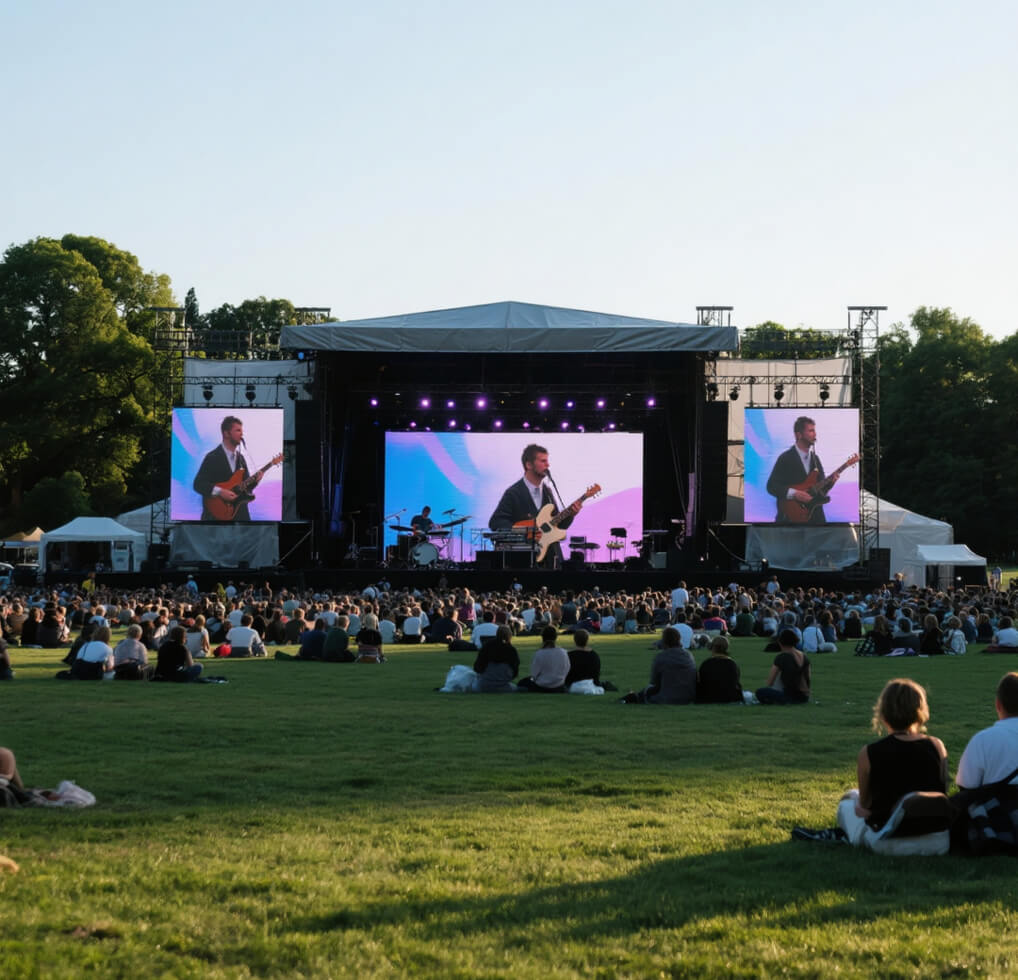Introduction
LED displays have become a standard feature of stage performances, finding widespread use in concerts, galas, and even plays. They have gradually replaced traditional projectors and screens, revolutionizing stage presentations. As living standards improve, traditional, single-format stages are no longer sufficient. Consequently, LED displays, with their dynamic stage backdrops and atmospheric lighting, meet these demands. So, what role do stage LED displays play in performances?

1. Create colorful background effects
LED displays have clear imagery and stable performance, transcend the traditional static screen format, enabling instant switching of screen content. Background content can seamlessly change at any time, adapting to the scene. And blending seamlessly with the show through flexible and dynamic imagery. Whether it’s the dreamy gradients of a musical, the neon lighting effects of a concert. Or the traditional ink-and-wash tones of a play. LED displays deliver a refined and layered effect, adding depth to the stage backdrop.
2. LED display enhances the performance atmosphere
In a stage performance, the actors are dynamic, while the screens are static. Light projection and the dynamic images displayed on LED screens also create a unique atmosphere. The LED backdrop wall by aligning with the rhythm of the performance and the visual content, achieves a deep integration of lighting and content. Real-time screen and lighting control synchronizes the performance with the rhythm of the performance. For example, at musical climaxes, strobe light and slow-motion footage enhance the rhythmic feel of the performance.
In terms of visual content(close-ups of singers and animated plots, etc,). The side screens and the floor can be used to extend the layering of light and shadow. For example, during a stage performance, as a dancer moves. The main screen’s lighting constantly illuminates the dancer’s center, creating a dynamic spot of light. While the side screens simultaneously diffuse and change color. If the performance includes plot twists, switching between warm and cool lighting colors and visual style can transform the audience from spectator to participant, further enhancing the performance’s appeal and atmosphere.
3. Realize flexible and changeable stage scenes
Compared to traditional single-screen backdrops, LED displays support a variety of scene transitions. For circular venues, stage LED displays can be installed in a curved shape to provide optimal viewing angles for all audience members. Main and side screens can also be combined to suit the program’s requirements, with content adapting to the performers’ movements, creating a striking effect of seamless integration between the performers and the screen.
Live close-ups of the stage and backstage footage can be projected onto the main screen, bringing audiences closer to the back rows and enhancing their sense of engagement. During song and dance performances, the screen can even play images that sync with the lyrics. Such as a dazzling galaxy during a song about “starry sky” or a vast grassland scene during a song about “grassland,” creating a symphony of sound and image. This not only allows for real-time interaction with the background performance but also provides the audience with a visual experience.
Summary
In concerts, cabarets, and dance performances, LED displays create a vibrant stage atmosphere and visual impact for the audience. More than just a technological upgrade, LED displays are a vital partner in art and stage performance. Previously a supporting role, they have become a key player, on par with the performers, playing an indispensable role in stage design and performance.
